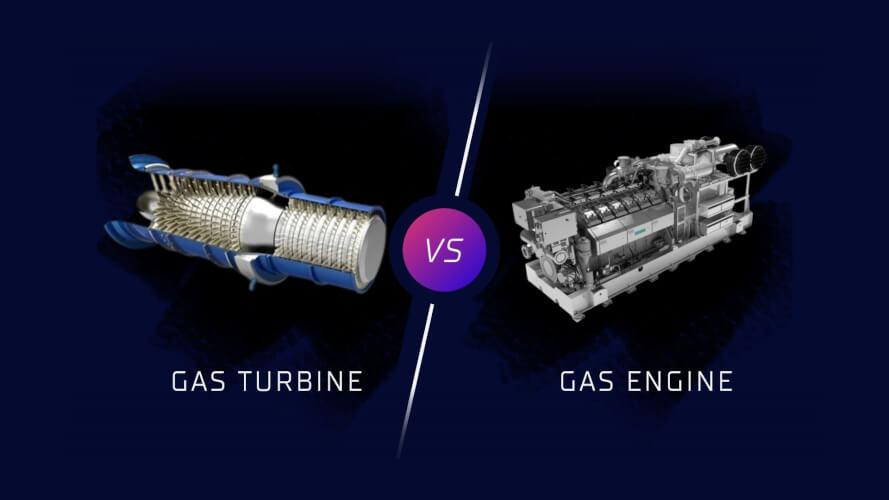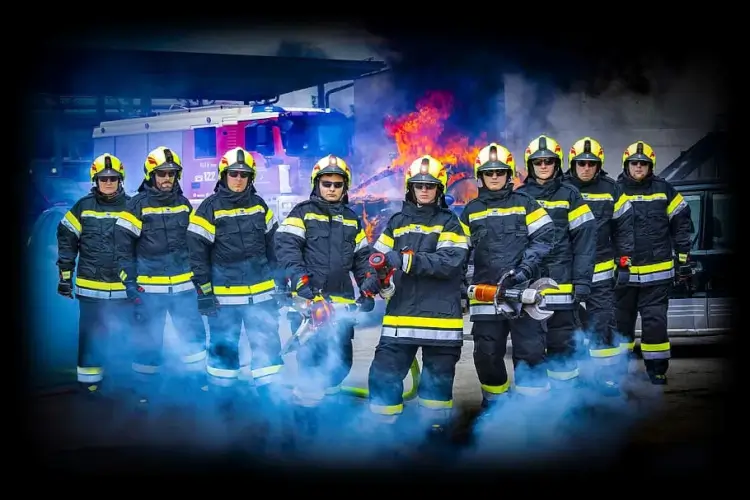Gas turbines and gas engines are both efficient power generation solutions employed by many power plant operators. These types are used by many manufacturers in various co-production CHP installations in manufacturing and other specialized industries. Textiles, food processing, petrochemical refining, pharmaceuticals, electric utilities, and refining are some examples. Developers of distributed generation systems have two basic power sources to choose from: gas engines and gas turbines. Both have been demonstrated in thousands of cogeneration combined heat and power (CHP) systems worldwide.
Power utilities, hospitals, universities, district heating, seawater desalination, food processing, textiles, petrochemical refining, chemical processing, pharmaceuticals, pulp and paper, and general construction all use gas engines and turbines in CHP applications.
Both systems have steadily increased efficiency, reliability, emissions performance, and operating costs throughout the years. Both gas turbines and gas engines have distinct characteristics, and we discriminate between the two to meet the needs of our customers.
Gas Turbine Analysis
Gas turbines generate electricity through a combustion reaction. Compressed air and highly hot exhaust gases are produced when fossil fuels burn. These gases interact with the turbine blades, spinning them and generating power.
The Breton or Joule cycle is a cycle that generates energy from compressed air and fuel. Air is forced into a gas turbine for combustion, resulting in significant noise, which facility managers can minimize by using inlet silencers.
The exhaust also makes noise when it exits, which is directed at the specific exhaust silencer. The upstream air compressor, the combustion system where the reaction occurs, and the turbine blades that rotate as the hot gas goes downstream are all critical components of gas turbines.
The combustion reaction generates exhaust gases that can reach temperatures of 1,500 °C, which is substantially higher than the operating temperature of a steam turbine. Because water is not a critical component of the process, there is no chance of your business being shut down due to internal freezing.
However, because gas turbines run on fossil fuels, the combustion process inherently emits pollutants including nitrogen oxides. A gas turbine is an engine that burns fuel by using compressed air and pressure. A gas turbine is a combustion engine that turns liquid fuels, particularly natural gas, into mechanical energy. It is the brainchild of a power plant. This energy drives a generator, which generates electricity. A fuel-air mixture is heated to extremely high temperatures within a gas turbine. This causes the turbine’s blades to spin faster. Gas turbines power aircraft, trains, and ships, as well as electric generators, pumps, gas compressors, and tanks.
Companies like GE and Woodward design and develop control systems for gas turbines. This protects and improves the operation of the gas turbine. GE products include IS200BPVCG1BR1, IS200VAICH1D, etc.
Gas Engine Analysis
A gas engine is a type of engine that is powered by the creation, expansion, or combustion of gas. Gas engines are mass-produced and inexpensively, whereas central power plants are a one-of-a-kind technology.
Several gas engines are coupled to produce generating sets in a power plant setup. Each engine, however, is linked to its own shaft, which is linked to an electric generator. The sets are available in standard capacities ranging from 5 to 20 MW.
The gas engine contributes significantly to CO2 reduction through the high-efficiency operation that uses natural gas and municipal gas, as well as low-calorie gases produced in gasification melting furnaces. Gas engines are typically internal combustion machinery in the realm of power plant operation.
It is powered primarily by specialist fuels such as produced gas, natural gas, and blast furnace gas. Furthermore, it functions on the Otto cycle, or four-stroke cycle, to be precise. As a result, the system has spark plugs that initiate the ignition rather than start it automatically.
Heat sources in power plant-based gas engines are typical:
- Hot lubricating oil,
- Exhaust gas, and
- Gas-fuel mixture production.
To generate electricity, power plants use numerous gas engines that are linked together. Nonetheless, all linked engines have separate shaft attachments that eventually connect to an electric generator.
Comparison between Gas Turbines and Gas Engines
Here is the key point of variation between the two models to help you grasp the differentiating point. For a clear picture, they are divided by utilization amounts, functionality, and performance.
Electrical Energy Efficiency
In terms of electrical efficiency rate, gas turbines and gas engines have different efficiencies.
Former choices often have a range of 29-33 percent. The electrical efficiency ranges of gas engine systems, on the other hand, are between 48.5 and 49 percent.
Necessary Heat
The major heating element in gas turbines is steam, whereas the alternator uses both steam and hot water.
Cogeneration Efficiency
In terms of cogeneration level, gas engine efficiency rates range from 63.5 percent to 77 percent. The gas turbine, on the other hand, has an overall cogeneration efficiency rate expansion of 80-83 percent.
Machine Size
The majority of the components accessible in a gas turbine are modest in comparison to gas engines. This is characteristic of power plant machinery. In fact, many of the gas engine components on the market are enormous, with capacities exceeding 3 MW. This, together with the rising demand for operational flexibility and higher electrical efficiency rates, has boosted the popularity of gas engines. This has an impact on the gas turbine market graph’s demand-supply ratio.
Power Plant Demand
Many power plants are currently focusing on increasing operational flexibility in order to improve performance. In many circumstances, this entails raising the ramp-up and ramp-down speeds.
Gas engines are a viable choice in this situation, and many OEMs and power plant operators are converting to this technology.
Gas turbines, on the other hand, are still in use and are a popular choice in medium- to large-scale industrial plants, particularly 30 MW turbines.
Energy efficiency
Even under a reduced load, both gas turbines and gas engines exhibit good electrical efficiency.
Gas engines, on the other hand, outperform letters.
Heat Exhaust
In terms of exhaust heat, the gas exhaust from gasoline engines is rather cool. Gas turbines, on the other hand, produce a tremendous amount of exhaust gas at a high temperature.
Emissions of NOx
It should be noted that the average O2 level is 15%. The two technologies here have NOx emissions of 15-25 ppm for gas turbines and 57 ppm for gas engines.
Start-up Time
Gas engines take roughly 10 minutes to start up, whereas gas turbines take about 20 minutes.
Vibration
In both contexts, the vibration quality is poor. A gas turbine, on the other hand, has less vibration.







